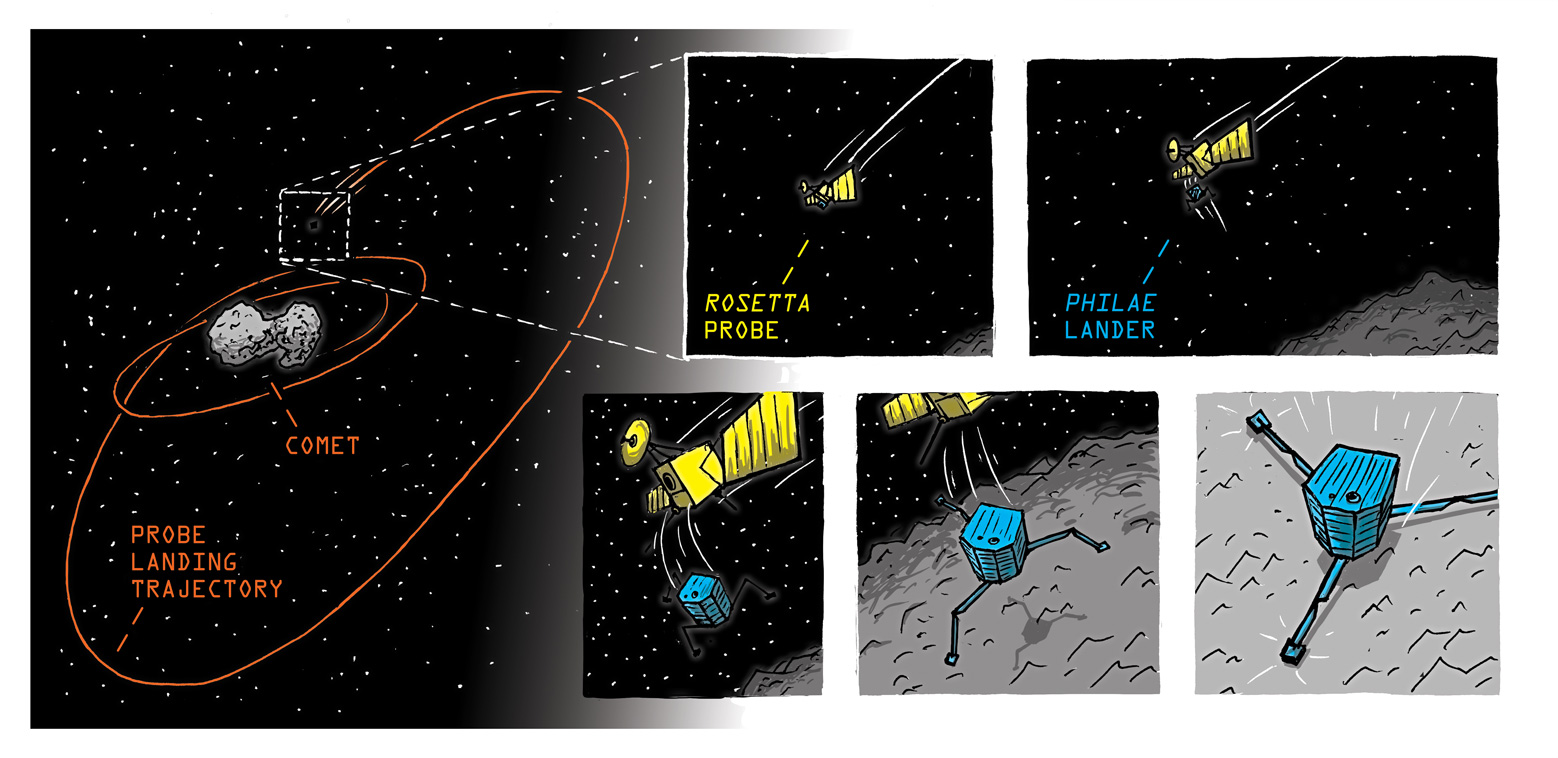On Nov. 12, 2014 the European Space Agency (ESA) accomplished a very important first: they landed a probe on a comet. While it is common knowledge that the mission has been one of the most complex tasks attempted by mankind, what may not be so widely known is that Rosetta is a mission over 20 years in the making.
The Rosetta mission was first proposed to ESA’s Science Program Committee in 1993. The mission would serve as part of the Horizon 2000 program, a science program operated by the space agency from 1985 to 2000. Other missions that have been part of this program include the Solar and Heliospheric Observatory to study the Sun, the Cluster satellite mission which used four satellites to monitor solar wind and the Earth’s magnetosphere, and XMM-Newton, which is an on-Earth observatory to study soft X-rays which are produced by forming stars and galaxy clusters.
The Rosetta probe was named in honour of the Rosetta stone, the ancient Egyptian tablet famous for its inscriptions in hieroglyphics and Greek. The lander of the probe was named Philae, after the Philae obelisk in Egypt. Both the Rosetta stone and the Philae obelisk helped Egyptologists translate hieroglyphics to give insight into the ancient way of life. European Space Agency scientists hope that studying a comet will give us insight into the origins of the universe.
It took 10 years from the proposal acceptance to completion before the probe was ready for launch. The original launch date was for January 2003 but a failed Ariane rocket launch the month before pushed the date back. Finally, on March 2, 2004 the probe was launched into Earth’s orbit.
The time it took for Rosetta to reach comet 67P was nearly equal to the time it took to build the spacecraft.
For a year, the probe followed Earth’s orbit around the Sun before looping around the Earth for a gravity-assisted swing towards Mars. This gravity assist took place on March 4, 2005.
In February 2007 Rosetta reached Mars, and another gravity assist was performed to slingshot it back towards Earth, coming back to the planet’s orbit in November of the same year. This gravity assist helped the probe pass the orbit of Mars.
In November 2009, Rosetta would make its last flyby of Earth, finally on its way towards Comet 67P.
In May 2011, the space probe went into hibernation mode, waking up 3 years later in January 2014.
Months later, in August 2014, Rosetta finally rendezvoused with comet 67P, and after over two months would land the Philae probe onto its surface.
Perhaps showing its age, the Rosetta probe uses two RTX2010 processors – a 16-bit, 8MHz processor. The 80c3x microcontroller is also used, which operates with 256 bytes of RAM. To compare, the Snapdragon 801 quad-core processor used in the Samsung S5 smartphone is a 32-bit chip and has a speed of up to 2.5 GHz/core. The S5 also has 2GB of RAM. For perspective, 2.5GHz is 2,500 MHz and 2GB is 2 billion bytes.
The Rosetta mission accomplished something amazing: sending a space probe to land on a moving comet for the first time in human history. Equally impressive is the amount of planning that went into this mission, and the amount of time it took to reach its final destination.


